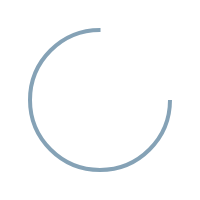Identify IPOs For A Listing Pop
“Investors will have to keep aside ₹8,000 Crores for IPOs in the month of August as 8 to 10 companies look to raise funds through Initial Public Offering” – Economic Times
What is an IPO?
IPO or Initial Public offering is a way of raising funds from the public investors by issuing shares of company through stock exchanges. Although these are generally used by companies to raise funds to either rebalance their debt, fund further expansion plans or meet their working capital requirements. Example of Sigachi industries IPO
Objects of the issue
The net proceed from the IPO will be utilized towards the following purposes;
1.Funding Capital Expenditure
- For expansion of prouduction capacity for MCC at Dahej, Gujarat 28.15 crores.
- For expansion of prouduction capacity for MCC at Jhagadia, Gujarat 29.24 crores.
- Funding capital expenditure to manufacture CCS at the Proposed unit 32.29 crores.
IPOs are also a most popular method used by institutional investors to exit their position in the company. These investors buy stake via private placement in these company when it is in the growing stage and exit via IPOs. Since these are risky bets, they make multibagger returns. Example of Blackstone exiting Sona BLW Precision.


So, should we invest in an IPO?
IPOs are popular amongst retail investors for its listing pop. Listing Pop is when a company lists on stock exchanges at price which is much higher than its issue price. For example, Ideaforge technology came with an IPO of 567 Crore on 26th June 2023 at an “Issue Price” of ₹672. On 7 July 2023, Ideaforge Technology got listed on exchanges at “Listing price” of ₹1305. Those who had received an allotment of the ipo at ₹672 made a listing gain of 94.2%.
How to identify IPOs with potential Listing POP?
Stock market is an auction platform where investors meet and place their orders. These orders create demand and Supply which in turn decides the price of companies listed here. Companies categorise IPO investors in 4 broad categories, these are:
- Qualified Institutional Buyers
- Non-Institutional investors
- Retail Investors
- Employees
During an IPO, a company decides on the amount of money they want to raise and offer maximum quota to each category. Companies then open a brief window of 3 days to receive buy order bids. These bids also known as subscription status indicates the demand of shares of those companies from the respective categories. Continuing with the example of Ideaforge technology, they were looking to raise ₹567Crores. Find shares offered and subscription status of them below.

Following Smart Money
Institutional buyers are usually considered as smart money in the market. They have power of funds which make them an important player in deciding the shape of the market. They also have strong due diligence compared to other category of investor as at times public money is involved with them. Historically, it has been proven that IPOs with higher demand from QIB tends to perform well in the market. A few examples are below.

Hence, Companies with higher interest from Qualified institutional Buyers tends to perform better on listing. P.S. This is not a rule of thumb just a general observation, there might be some exceptions and it is better to consult your investment advisor and conduct full due diligence on companies before making an investment decision.
Upcoming IPOs in 2023
- SBFC Finance
- Concord Biotech
- TVS Supply Chain
- Ebix Cash
- Pyramid Technoplast
- OLA



